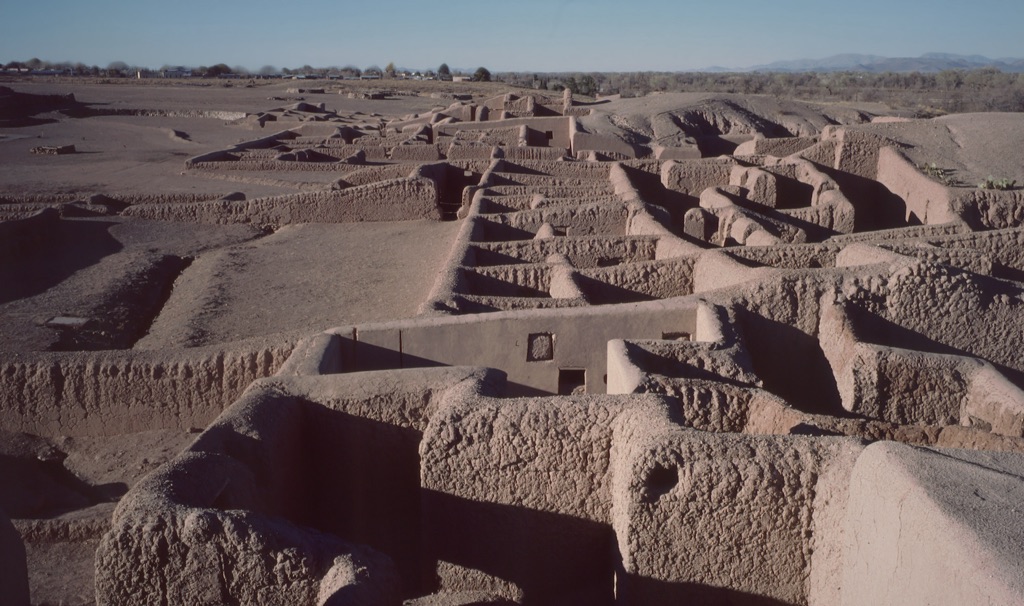Summary
Casas Grandes: A Mysterious Civilization
Casas Grandes, known as Paquimé, is an ancient archaeological site in Chihuahua, Mexico. It was once a major center of the Mogollon culture, thriving from the 13th to the 16th centuries. This site showcases unique adobe constructions, some several stories high, that reflect a blend of Indigenous and Mesoamerican architectural styles. Intriguing artifacts found at Casas Grandes reveal a people skilled in crafts and trade. They present a civilization that had complex social and economic systems. The reasons behind the site’s eventual abandonment remain a topic of debate among historians.
Get your dose of History via Email
Architectural Marvels of Paquimé
The ruins of Casas Grandes highlight an advanced society with strategic urban planning. The site features ceremonial mounds, ball courts, and an elaborate water control system. These characteristics emphasize its importance as a cultural and religious hub. The T-shaped doorways and extensive road networks suggest a high level of architectural sophistication. It was a carefully designed space that managed both public and private roles within the community. Today, these structures stand as impressive remnants of a lost civilization’s ingenuity and way of life.
Significance in World History and Culture
Casas Grandes holds immense historical and cultural importance. It provides key insights into the pre-Columbian civilizations of North America. This site is recognized by UNESCO as a World Heritage site. Scholars value it for its contributions to our understanding of early agricultural, social, and economic practices. Casas Grandes serves as a testament to the adaptation and innovation of the indigenous peoples in a harsh desert environment. Its ongoing study offers a continual discovery of the rich and diverse tapestry of our human past.
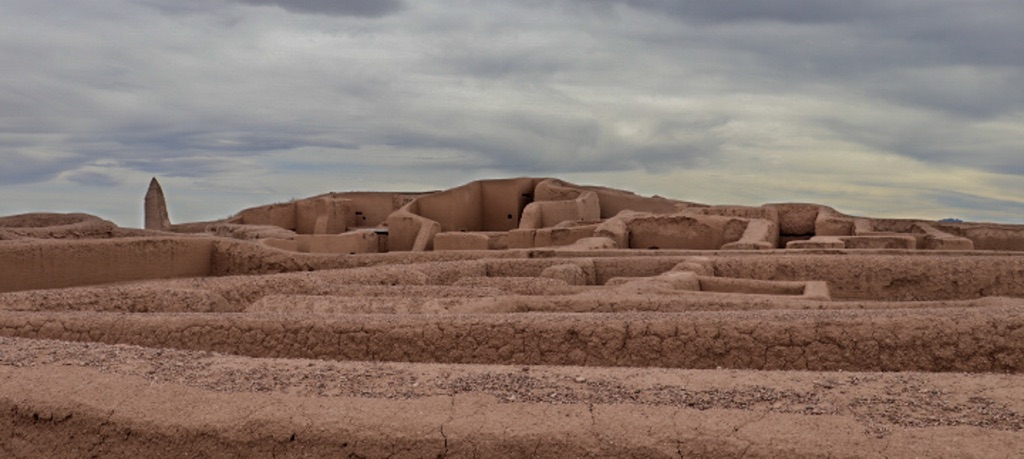
Historical Background of Casas Grandes (Paquimé)
Casas Grandes, also known as Paquimé, stands as a significant archaeological find in Northwestern Mexico. It is nestled in the valley of the Casas Grandes river. This area harbors the ruins of a pre-Columbian town. Experts believe that it thrived during the 13th century. The site mirrors the cultural blend of North Mexico’s ancient civilizations. It bridges the gap between the Pueblo peoples of the American Southwest and the more advanced Mesoamerican civilizations.
Peak of the Mogollon Culture
At its zenith, Paquimé was likely the most influential center of the Mogollon culture. The people had advanced agricultural methods. These included irrigation systems to water their crops in the arid landscape. They built impressive multi-storied structures that showed high levels of craftsmanship. The society’s aptitude for commerce and art also set it apart. It engaged in trade with distant regions. It also had intricate art forms that are admired to this day.
The Architectural Wonders
The architecture at Casas Grandes is notable for its geometric complexity and functionality. The town had a sophisticated layout with public and residential buildings. The constructions included impressive adobe houses, ball courts, and ceremonial mounds. The T-shaped doorways and windows, unique to the site, inspire curiosity and wonder. These features are indicative of a highly organized society that valued community and ritualistic practices.
Enigmatic End to a Flourishing Settlement
Despite its grandeur, the site faced sudden abandonment around the 15th century. The exact reason for this fall remains a mystery. Scholars have suggested drought, resource depletion, or conflict as possible causes. The enigmatic end of Paquimé adds a layer of mystery to its history. Today, the site prompts many questions about the resilience and vulnerabilities of ancient societies.
Today, Casas Grandes stands as a window into the past. It provides invaluable lessons about the ingenuity and adaptation of the ancient peoples. Its enduring structures and artifacts continue to embellish our understanding of the vastness and complexity of human histories.
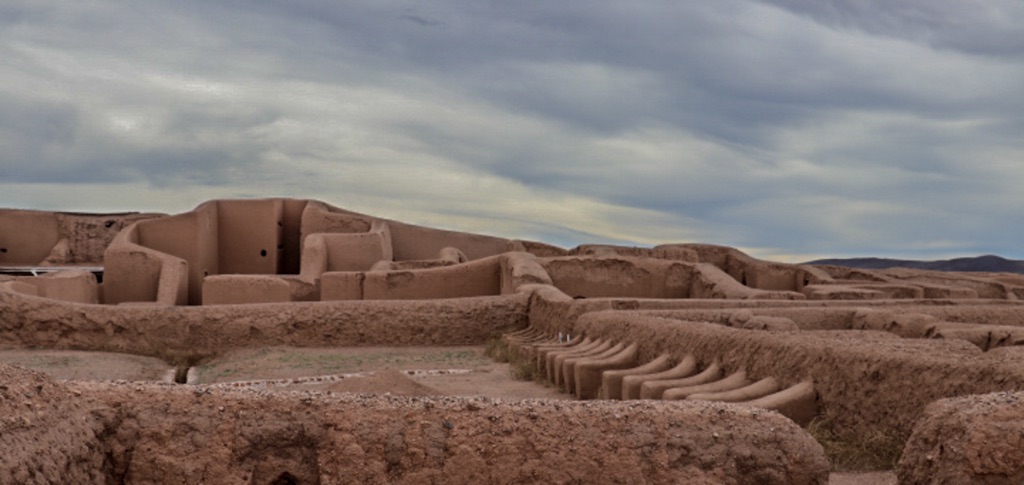
The Discovery of Casas Grandes (Paquimé)
Casas Grandes, or Paquimé, was not revealed to the modern world until the 16th century. Spanish explorers came across the ruins during their conquests in northern Mexico. The site, already abandoned, captured their curiosity. Little did they know, they had stumbled upon the remains of a vibrant ancient culture.
Early Documentations
The earliest written records about Casas Grandes date back to 1565. They describe it as an ancient city of “great houses”. These reports arose from the expedition of the Spanish explorer Francisco de Ibarra. His accounts provided a European perspective on the site’s grandeur and raised interest among scholars and explorers alike.
Archaeological Interest Sparks
In the 19th century, the site caught the eye of American and European adventurers. They began to recognize its historical significance. The detailed work of explorers like Adolph Bandelier in the 1880s helped shape the initial understanding of the site’s importance.
Systematic Excavations Begin
It was not until the 1950s that extensive archaeological investigations started. Teams led by prominent archaeologists like Charles Di Peso used scientific methods to excavate and study Casas Grandes. Their discoveries shed light on the daily life, culture, and social structure of the inhabitants. These insights led to a greater appreciation and respect for the site’s role in history.
Today, Casas Grandes is a site enveloped by a sense of intrigue. It continues to be a focal point for archaeological studies, attracting researchers worldwide. Each new finding contributes to the unraveling story of Paquimé and its people.
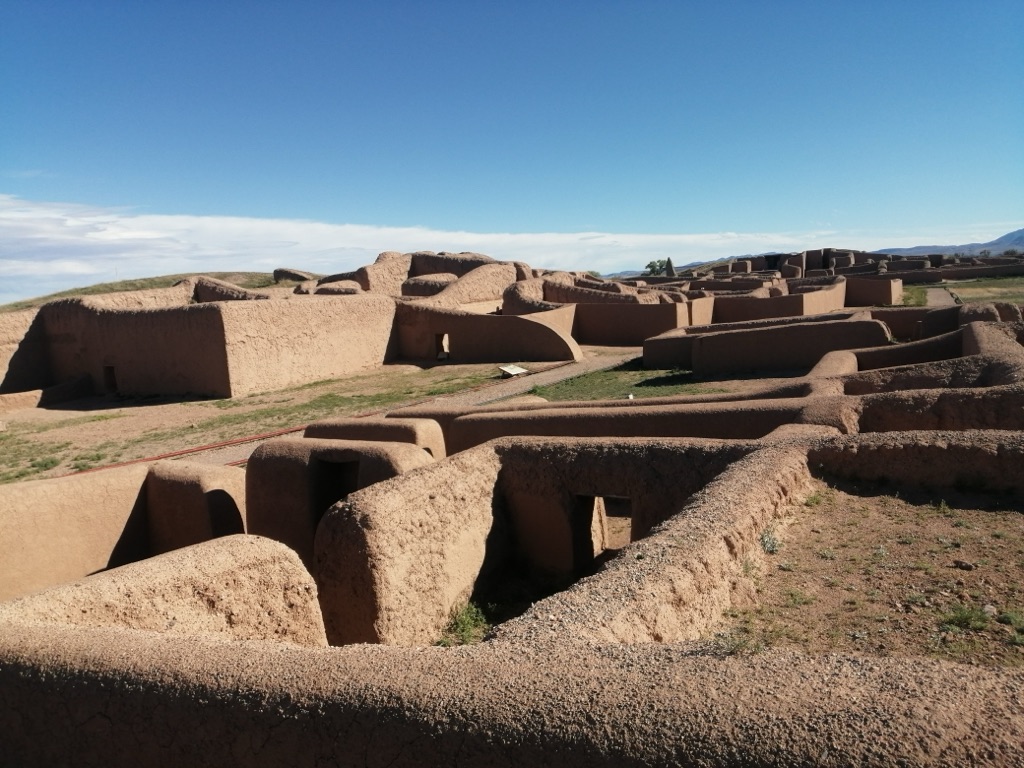
Cultural Significance, Dating methods, Theories and Interpretations
Casas Grandes (Paquimé) stands as a testament to the Mogollon culture’s achievements. Its urban planning, architecture, and art speak volumes about the region’s prehistoric social complexity. The site demonstrates trade connections that extended far beyond its heartland. These connections bridged cultures across Mexico and the southwestern United States.
Unlocking Chronologies: Dating Methods
Determining the age of the structures at Casas Grandes has been challenging. Yet, it’s key to understanding its historical context. Archaeologists have used a combination of typological dating and radiocarbon methods. The stratigraphy of ceramics and architecture reveals chronological sequences. Plus, organic samples provide precise radiocarbon dates. This dual approach has placed the peak occupation of the site between the 13th and 15th centuries.
The Puzzle of Paquimé: Theories and Interpretations
The function and status of Casas Grandes have stirred various theories. Some suggest it was a ceremonial center, a trading hub, or an influential city-state. Its exact role could have shifted over time, reflecting economic and environmental changes. The diverse interpretations show the site’s complex role in regional dynamics.
Cultural Impacts and Legacy
The cultural impact of Paquimé extends into contemporary times. It offers a glimpse into the life and belief systems of ancient peoples. The site’s intricate designs carved into pottery, and murals have shaped the artistic traditions of indigenous communities. They continue to influence modern Pueblo and Mesoamerican cultures.
Despite excavations and studies, some secrets of Casas Grandes remain hidden. The site captures the immensity of ancient human endeavor and stirs a sense of wonder. Each discovery can shift our interpretations and deepen our appreciation of this cultural landmark.
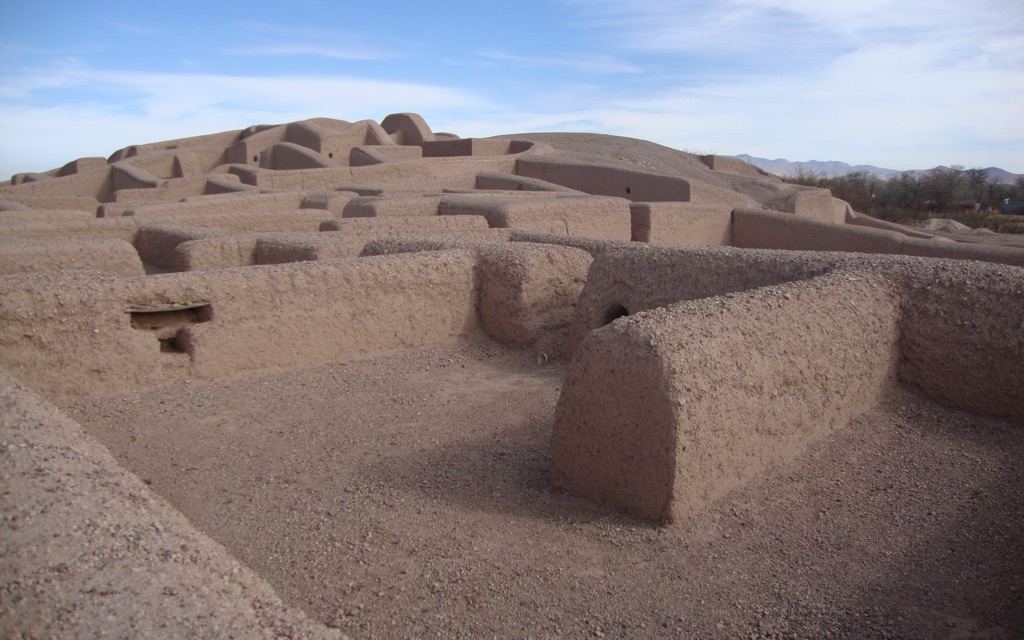
Conclusion and Sources
The exploration of Casas Grandes (Paquimé) has provided a rich tapestry of information about a civilization that once flourished in the arid lands of Mexico. Although much has been uncovered about the site’s structures, trade, and daily life, mysteries still envelop its ultimate decline. Each layer of soil and each unearthed artifact serves as a reminder of the site’s importance in weaving the historical narratives of the Americas. As an enduring symbol of the Mogollon culture and a bridge between North and Mesoamerican civilizations, Casas Grandes continues to captivate scholars and visitors driven by the desire to connect with our collective past.
Di Peso, C. (1974). ‘Casas Grandes: A Fallen Trading Center of the Gran Chichimeca, Vols. 1-3.’ Amerind Foundation Series. Dragoon, Arizona: Amerind Foundation.
Lekson, S. H. (2008). ‘A history of the ancient Southwest.’ Santa Fe: School for Advanced Research Press.
Phillips, D. A., Jr. (2002). ‘A Preceramic Campsite in Chihuahua, Mexico.’ Journal of Field Archaeology, 29(3-4), 123-137.
Ramirez, S., Watson, A. S., & Hall, M. R. (2009). ‘Paquimé and the Casas Grandes World.’ Salt Lake City: University of Utah Press.
Woosley, A. I., & Ravesloot, J. C. (1988). ‘The Paquimé Regional System: A Preliminary Cultural Ecological Perspective.’ Explorations in Cultural Anthropology, 235-257.

